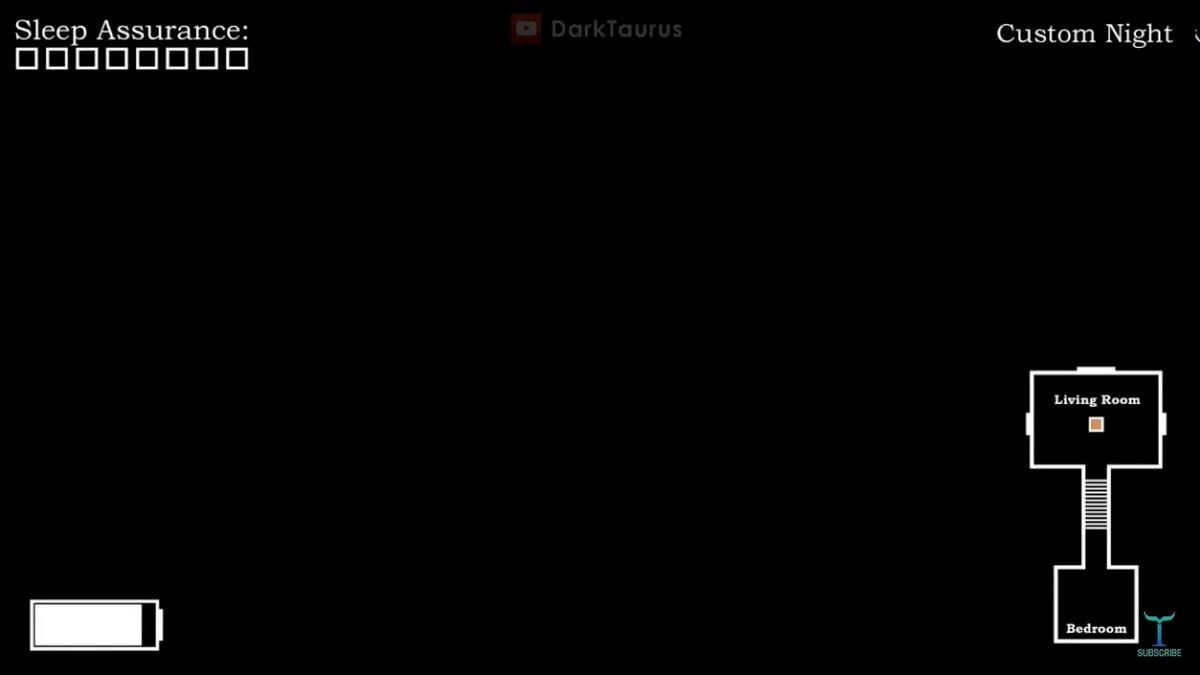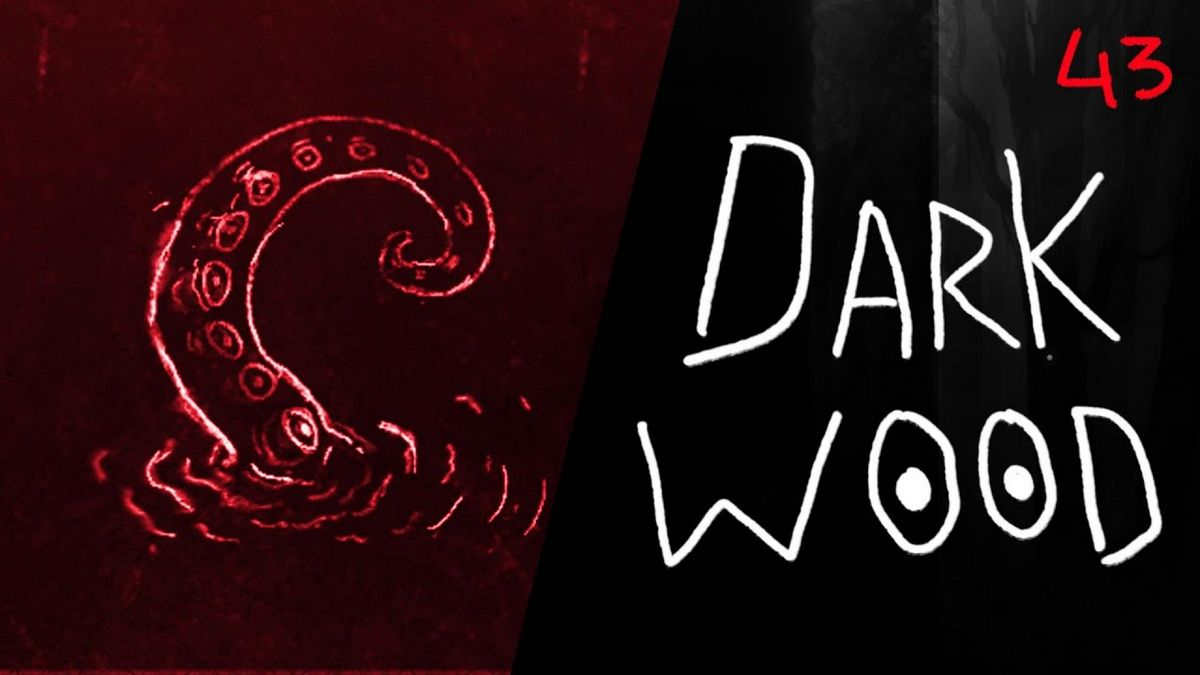Darkwood is a critically acclaimed and widely popular survival horror game that has managed to carve out a unique place in the gaming landscape. Developed by Acid Wizard Studio, Darkwood was released in 2017 and quickly became an instant hit amongst gamers who are drawn to atmospheric horror games with challenging gameplay mechanics.
Set in a mysterious forest where supernatural dangers lurk at every turn, Darkwood throws players into the middle of a nightmarish world where they must explore, scavenge for resources, and fight for their lives against terrifying beasts and undead creatures. The game’s defining feature is its permadeath mechanic which adds an element of risk and tension that keeps players on edge throughout their journey.
The immersive art style of Darkwood sets it apart from other horror games as it uses top-down perspective along with intricate sound design to create an eerie atmosphere that grips players from start to finish. With its blend of tense gameplay mechanics, excellent storytelling, innovative graphics design, and replayability factor – Darkwood has become one of the most beloved games in recent years amongst fans of survival horror genre.
- An Overview of Darkwood: A Glimpse into the Horror-Survival Game Genre
- Exploring the Mechanics and Gameplay Features of Darkwood
- The Role of Procedural Generation in Immersing Players in the Eerie World of Darkwood
- The Significance of Sound Design and Music in Creating a Haunting Atmosphere in Darkwood
- Narrative Storytelling Techniques Used in Darkwood to Engage Players and Build Tension
- Breaking Down Character Progression and Skill Systems in Darkwood: How to Survive Longer?
- Analysis on Environmental Design, Art Style, and Lighting Effects that Bring out the Chilling Vibe for Players
- Comparing Different Difficulty Levels Available In Game – Which One Suits Your Playstyle?
An Overview of Darkwood: A Glimpse into the Horror-Survival Game Genre

The game takes place in a forest where the protagonist, who is unnamed, must survive against various horrors lurking around them. These horrors include mutated creatures, supernatural beings, and even other humans.
Darkwood utilizes different mechanics that make it stand out from other horror games. One of these mechanics is the lack of direction or objective markers in-game, which gives players the freedom to explore their surroundings without being guided towards specific goals. Additionally, the game has multiple endings depending on choices made during gameplay, adding replayability value for gamers.
The game also features crafting mechanics that allow players to craft weapons and traps using materials found in-game to help defend themselves against enemies while exploring the dark forest at night. Furthermore, Darkwood’s day-and-night cycle affects gameplay as certain events and enemies only appear during specific times of day.
Overall, Darkwood provides an eerie atmosphere with its use of sound effects and visuals coupled with its challenging survival gameplay elements making it one of the best horror-survival games currently available today.
Exploring the Mechanics and Gameplay Features of Darkwood
The mechanics and gameplay features of the game are designed to create an atmosphere of tension and fear, making it one of the most immersive horror games available today.
One of the key mechanics in Darkwood is its open-world gameplay system. Players are free to explore the forest at their own pace, encountering various monsters and other dangers along the way. The game also includes a day-night cycle, where players must find shelter before nightfall or risk being attacked by sinister forces lurking in the shadows.
Another prominent feature in Darkwood is its crafting system. Players can collect materials throughout their journey which can be used to create weapons, tools, and other essential items needed for survival in this hostile environment. Crafting allows players to customize their playstyle based on personal preferences while providing a more realistic experience.
Finally, Darkwood offers multiple endings depending on how players choose to progress through the story. This non-linear approach encourages replayability as gamers strive to uncover all possible outcomes from their choices within each playthrough.
Overall, exploring these mechanics and gameplay features makes it clear why Darkwood has become such a popular horror title among gamers who want an immersive experience with chilling moments around every corner – perfect for those who crave intense thrills in gaming!
The Role of Procedural Generation in Immersing Players in the Eerie World of Darkwood
In Darkwood, this technique is used to great effect in crafting a world that constantly surprises and terrifies players at every turn. By generating the layout of each level randomly, the game creates an unknown landscape where danger could lurk around any corner.
In addition to creating a sense of unpredictability, procedural generation also plays a crucial role in building atmosphere. Darkwood’s eerie aesthetic relies on small details like overgrown vegetation or abandoned buildings to create a sense of dread and unease. The use of procedural generation ensures that these elements are never repeated too often, making every new area feel distinct from those that came before it.
Perhaps most importantly, procedural generation allows Darkwood’s gameplay mechanics to shine through. With no two levels ever being quite the same, players must constantly adapt their strategies as they explore each new environment. This keeps the experience fresh even after multiple playthroughs and encourages experimentation with different weapons and abilities.
Overall, there can be no doubt that procedural generation is one of the key components behind Darkwood’s success as an immersive horror title. Its ability to create unique landscapes while fostering replayability speaks volumes about its potential for future games in similar genres.
The Significance of Sound Design and Music in Creating a Haunting Atmosphere in Darkwood
The game’s sound design is an art form that immerses the player deeply into the world of horror. It encompasses everything from eerie ambient sounds to the guttural growls of monsters, which send shivers down your spine.
One important aspect of sound design is its ability to evoke emotions within players. The use of creepy background noises and sudden sound effects can create fear, paranoia, and anxiety in gamers as they navigate through this dark world. Furthermore, the soundtrack reinforces these feelings by providing an ominous undertone throughout gameplay.
Music also plays an essential role in setting up players for scares or building tension during intense situations. For instance, when battling enemies or entering dangerous areas where death could be lurking around every corner; the music changes dramatically in tone and tempo – signaling that something foreboding is about to happen.
In conclusion, it’s clear that sound design and music are integral elements to making Darkwood such a horrifying experience for players who love horror games. Without these factors working together accurately – atmospheric dissonance would not have been possible. Therefore developers must invest time into creating well-executed compositions that complement one another seamlessly while reinforcing theme(s) established across various game levels/scenes using thematically appropriate sounds with each scene successfully delivering on its intended emotional impact.l
Narrative Storytelling Techniques Used in Darkwood to Engage Players and Build Tension
One technique that the game uses is environmental storytelling. Throughout the world, there are numerous areas that tell stories without using dialogue or cutscenes. The player can piece together what happened through clues left behind – such as bloody handprints on walls or diary entries found scattered around the environment.
Another narrative technique used in Darkwood is character-driven storytelling. The game features a cast of compelling characters with unique personalities and motivations. Every interaction with them serves to further flesh out their personality traits and backstory, making it easier for players to get invested in their fates. Moreover, players’ decisions have consequences on how these characters progress throughout the story.
Finally, Darkwood employs dynamic gameplay mechanics that complement its engaging narrative elements perfectly – such as randomized encounters which keep things fresh each time you play through it while adding more depth into its narrative structure organically over multiple playthroughs.
Overall, Darkwood’s ability to weave together different types of narrative techniques creates an immersive gaming experience unlike any other horror title available today—it does not rely solely on jump scares but rather deepens its lore about various aspects from abandoned villages to supernatural creatures – keeping players engaged throughout every step of the journey they undertake within this dark twisted realm where nothing ever seems entirely safe!
Breaking Down Character Progression and Skill Systems in Darkwood: How to Survive Longer?
To survive longer, it is essential to understand the character progression and skill systems present in the game. Character progression refers to how your character evolves over time as you play, gaining new abilities or improving existing ones.
In Darkwood, character progression takes place through upgrades to equipment and skills. Upgrades can be purchased using resources collected throughout the game such as scrap metal, wood scraps or mushrooms. Improving equipment allows for more efficient defence against dangerous enemies while upgrading specific skills enables players to perform actions with greater efficiency – like gathering resources faster or crafting better items.
Furthermore, understanding skill systems also plays an important role in surviving longer in Darkwood. There are three main categories of skills: combat, exploration and crafting. Players must choose which type of skills they want to develop based on their preferred style of gameplay; whether they prefer sneaking past enemies or fighting head-on.

Overall, mastering the art of character progression and skill systems will allow players to succeed where others have failed – surviving longer in this dangerous world full of horrors at every turn.
Analysis on Environmental Design, Art Style, and Lighting Effects that Bring out the Chilling Vibe for Players

The environmental design is crucial in setting the tone and atmosphere of the game. The dilapidated buildings, overgrown foliage, and abandoned objects scattered throughout the environment all contribute to creating a sense of desolation and decay.
The art style chosen for Darkwood further enhances this theme through its use of muted colors, rough textures and distorted visuals. The pixelated graphics add an element of abstraction that heightens the feelings of uncertainty and unease experienced by players as they navigate through the world.
Lighting effects are another key component in cultivating a chilling atmosphere in Darkwood. Shadows loom large around every corner while flickering lights provide added tension as players progress through darkened environments. Carefully placed sources of light also help guide players forward while keeping them on edge with each new area explored.
Together, these elements come together seamlessly to immerse players in an eerie world full of danger at every turn. Whether navigating through dimly lit hallways or searching for supplies amid crumbling ruins, everything about Darkwood’s environmental design, art style and lighting serves to keep players engaged from start to finish – providing an unforgettable gaming experience that will chill even seasoned horror fans down to their bones.
Comparing Different Difficulty Levels Available In Game – Which One Suits Your Playstyle?
The default difficulty setting provides a fair challenge for most gamers but can still prove difficult for newbies or casual players. However, veterans of the genre may find this setting too easy and crave something more challenging.
The Hard mode in Darkwood is significantly tougher than its normal counterpart as it increases enemy damage output while reducing player health and resources available. For those seeking a hardcore experience that requires careful planning and resource management, this mode is perfect. On top of this, there’s permadeath (the inability to respawn once you die) which adds an extra layer of tension.
For those who prefer a more laid-back approach without sacrificing the challenge factor entirely, there’s also an easier gameplay mode aptly named “Story” where combat encounters are less frequent and enemies deal less damage overall. This allows players to focus on exploring Darkwood’s eerie atmosphere with minimal fear of instant death lurking around every corner.
Ultimately, choosing the right difficulty level in Darkwood comes down to personal preference. Whether you want a punishing challenge or relaxing exploration experience – or anything in between – there’s sure to be a suitable option available for all types of gamers out there!
In conclusion, Darkwood is a game that offers a unique and immersive experience for players who enjoy horror and survival games. The game’s top-down perspective creates an eerie atmosphere that keeps players on edge as they explore the dark and mysterious woods. Darkwood’s emphasis on resource management adds an element of strategy to the gameplay, forcing players to carefully plan their actions in order to survive.

One of the standout features of Darkwood is its procedurally generated world, which ensures that no two playthroughs are exactly alike. This adds replayability to the game and encourages experimentation with different strategies and tactics. Additionally, the game’s branching narrative paths give players agency in shaping the story according to their choices.
Darkwood also boasts impressive graphics and sound design that work together to create a truly unsettling atmosphere. The developers’ attention to detail shines through in every aspect of the game, from its environmental effects like rainstorms and foggy nights, to its haunting musical score.
Overall, Darkwood is an excellent example of how indie games can compete with AAA titles when it comes to quality storytelling and innovative gameplay mechanics. With its unique blend of horror elements, resource management gameplay mechanics, procedurally generated levels, branching narratives, stunning graphics and sound design – it provides a complete gaming experience for genre enthusiasts or anyone looking for something different than traditional mainstream releases.
Read More:- Experience spine-chilling horror with Clive Barker's Undying game – Get ready for a thrill ride!.
- Discover the Haunting World of Fatal Frame: Maiden of Black Water – A Chilling Gaming Experience!.
- Survive the Horror of Game NightCry: A Thrilling Interactive Experience.
- Experience Immersive Horror with The Persistence VR Game – Get Ready to be Scared!.
- Dementium II: The Horror Game That Will Keep You Up All Night – A SEO-optimized headline that includes the main key and relates to the topic in 70 characters.
- Unleash Your Inner Fear with The Evil Within 2: A Chilling Game Adventure!.
- Experience the Thrills of Deep Rock Galactic: A Multiplayer Sci-Fi Mining Game.